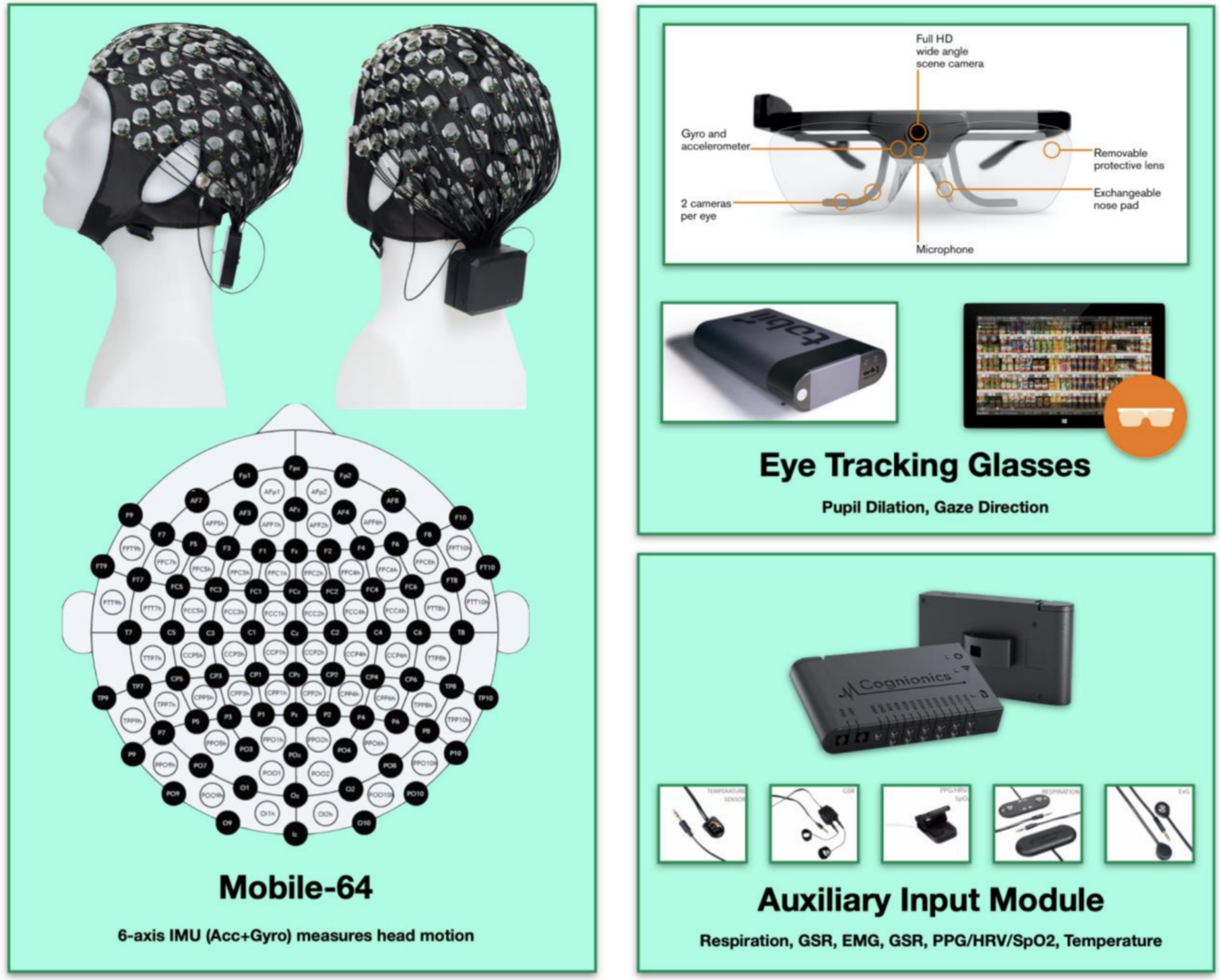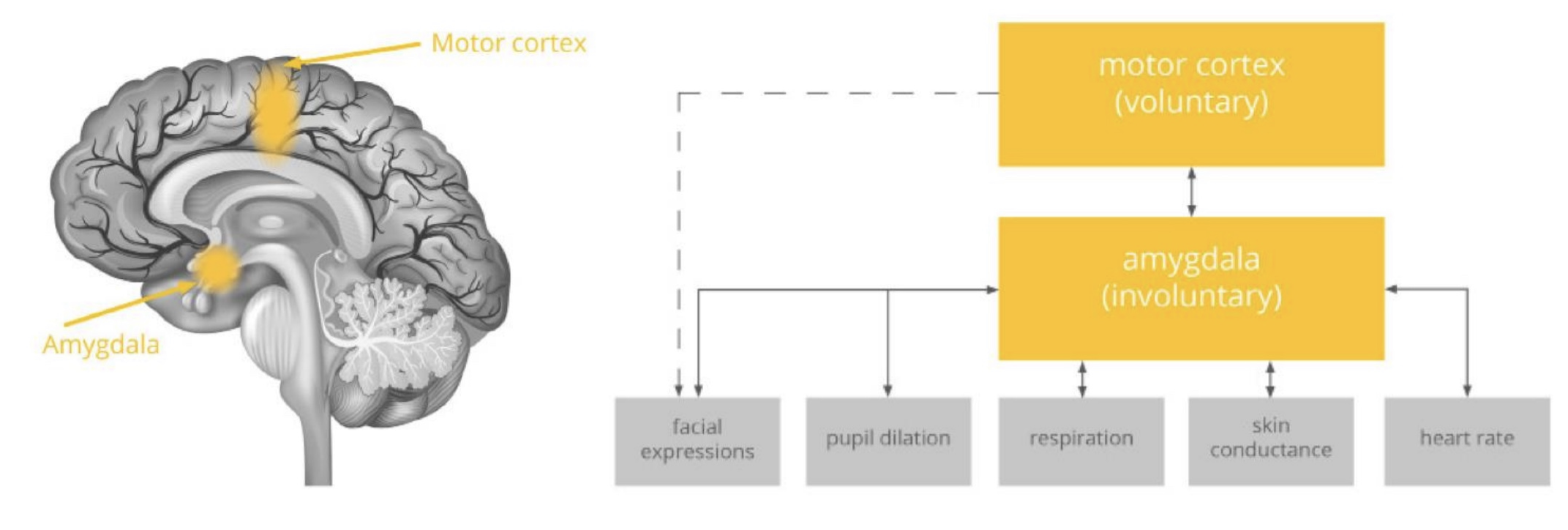Human Dimension
The recognition of how environmental factors are influencing human physical and cognitive performance is somewhat challenging. MINTS tries to understand the role of the environment in affecting human physical and cognitive performance. To do so MINTS caters a bio-metric package which has three components:
- A 64 Electrode EEG system including a 6-axis IMU (Acc+Gyro) measuring head motion.
- Eye tracking glasses measuring pupil dilation and gaze direction at 100 Hz, also including an HD camera and microphone.
- An auxiliary input module including respiration, GSR, EMG, GSR, PPG/HRV/SpO2, and body temperature.
The Mobile-64 is the world’s first mobile, wireless and wearable EEG system. The amplifier is a tiny box worn on the head. Stream EEG data wirelessly at 1,000 samples/sec, with full 24-bit resolution, or record to an onboard SD card. Take EEG recordings in environments and use cases that were simply impossible with previous generation technology. Providing an unparalleled level of signal quality in all environments and even under ambulatory conditions.
The amygdala is associated with processing life-threatening or emotional events. Besides fear and pleasure processing, the amygdala has been found to be generally responsible for autonomic functions associated with emotional arousal. The amygdala modulates the emission of cortisol and other stress hormones into the bloodstream, controls autonomic involuntary functions such as heart rate, skin conductance and respiration as well as observable behaviors such as changes in posture and - via the facial nerve - facial expressions. Humans do not have control over their autonomic functions (such as heart rate, sweat production controlling skin conductance, respiration, and pupil dilation). Valuable insights into cognitive load are provided by using bio-metric devices to measure autonomic functions in real time. The bio-metric sensors provide invaluable real-time unbiased measurements, that together with Machine Learning, we can use to interpret and provide actionable insights related to the impact of the environment on human physical and cognitive performance.

